Several methods are available to bring various products to life in the manufacturing industry. However, not every method is suitable for all projects. This is why you must consider the available techniques to know which works best for your applications. Today, we will explore two distinct machining techniques transforming the manufacturing industry – CNC machining vs conventional machining. Each method has its advantages and drawbacks, shaping the landscape of modern production.
CNC machining has automated the processes that were traditionally done by manually operated equipment. This technology uses computerized controls to shape raw materials into intricate designs with unparalleled accuracy. On the other hand, conventional machining is rooted in traditional craftsmanship. It relies on skilled operators to manually guide tools through the fabrication process.
In this comprehensive guide, we analyze both CNC and conventional machining, detailing their mechanisms, strengths, and limitations. We aim to equip you with the knowledge for informed decision-making for your project. Before exploring their differences further, let’s understand their basic principles.
What’s CNC Machining?
CNC (computer numerical control) machining is a subtractive manufacturing process. It employs computerized controls and machine tools to remove material layers from a stock piece to produce custom-designed parts. The CNC machining technology integrates traditional machining with CNC technology, computer-aided design, and auxiliary manufacturing processes.
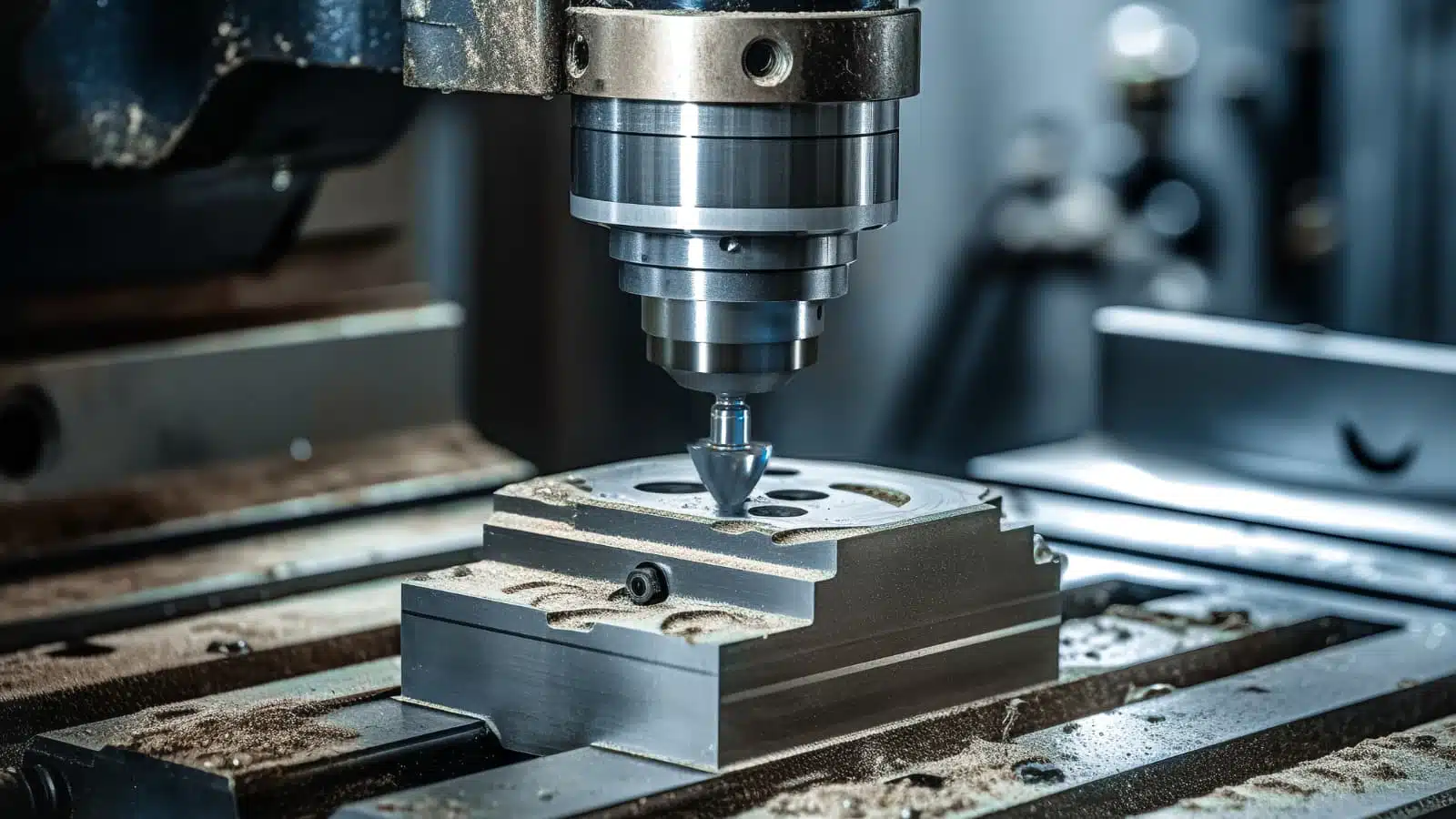
First, designers use Computer-Aided Design (CAD) software to create a digital 3D model of the desired part. Next, a skilled programmer translates the CAD model into a series of instructions (called G-code) that the CNC machine can understand. With the program loaded, the CNC machine securely clamps a block of raw material (workpiece) and uses computer-controlled motors to move the cutting tools along precise paths. The cutting tools progressively remove material from the workpiece, transforming it into the final shape dictated by the CNC machining program. This translates to high-quality CNC machined parts with precise dimensions and intricate details.
Advantages of CNC Machining
CNC machining offers several benefits that make it valuable in many applications. Some of these benefits of CNC machining include the following:
Precision and Repeatability
CNC machines precisely replicate CAD drawings, ensuring near-perfect output with an accuracy range typically between 0.0002 to 0.0005 inches. CAD models are converted into programmable codes (G-codes and N-codes) to control the movement of the cutting tool, ensuring precise results.
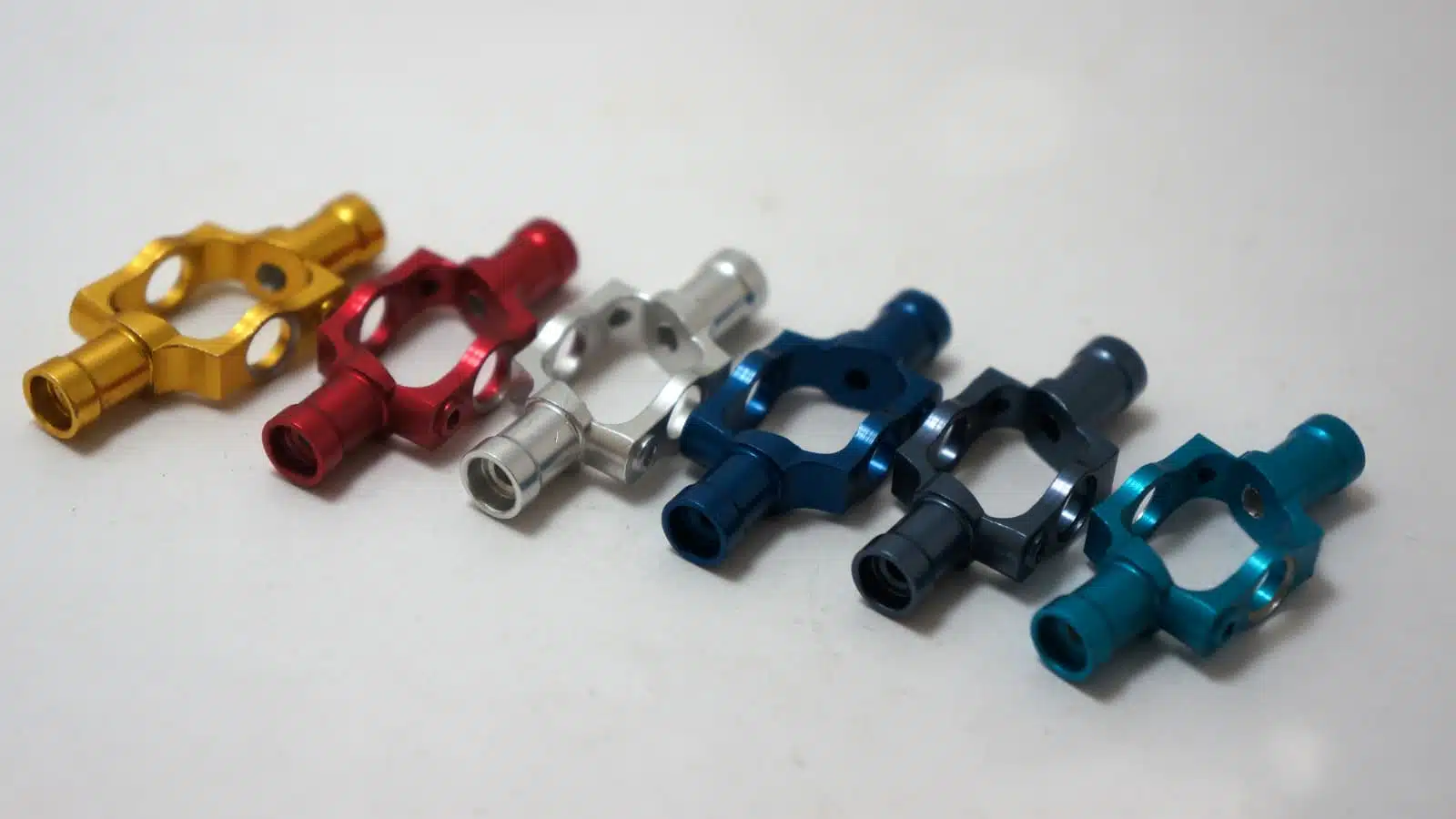
Even skilled machinists are susceptible to errors, resulting in variations in accuracy between operators. The CNC process reduces manual handling of tools, minimizing errors and enhancing repeatability, which is critical for applications like batch and mass production. Industrial CNC machinery, such as laser cutters, offer high repeatability indices of around ±0.0005 inches, producing exact replicas with minimal error.
Ability to Produce Complex Shapes and High-Complexity Parts
CNC machines offer up to 6 processing axes, providing high manufacturing complexity capacity. Most products can be produced with a machinable design and the appropriate machine. These machines excel in creating complex parts due to their operational, tolerancing, and surface finish capabilities. Modern CNC technology enables multi-axis rotation and translation, facilitating the machining of highly intricate features.
Typically, part manufacturing with a machine requires multiple setups to fabricate all features. However, higher axis capability reduces the number of setups needed, enhancing the potential to manufacture highly complex CNC machined parts. For instance, 5-axis machining can cut angles beyond the capacity of a 3-axis machine. Various CNC milling variations also contribute to maintaining design consistency.
Reduced Human Error and Enhanced Safety
Unlike manual machining, where operators must adjust tools and settings constantly, CNC machines follow pre-programmed instructions precisely, eliminating errors due to fatigue, misreadings, or miscalculations. CNC machines often come with enclosed work areas and safety features like automatic shut-off mechanisms, minimizing the risk of accidents. Moreover, operators are kept away from the machine while it’s running. Therefore, CNC machining reduces the risk of injuries from accidental contact with moving parts, hot materials, or sharp tools.
Efficient for High-volume Production
The automated CNC machining methods minimize the need for manual intervention, leading to quicker and more consistent production throughout the entire manufacturing cycle. With pre-programmed instructions, CNC machines can replicate the same parts repeatedly. This guarantees product quality and minimizes the waste that can arise from human error. Additionally, modern CNC machines are incredibly fast, allowing for rapid production of large components.
As production needs change, manufacturers can easily scale up CNC machining processes, providing flexibility for high-volume manufacturing. This flexibility in production capacity means you can maximize your resources and budget without being constrained by the number of parts you wish to manufacture.
Disadvantages of CNC Machining
While CNC machining offers several advantages that benefit many industries, there are some downsides to keep in mind. They include the following:
Higher Initial Investment and Maintenance Cost
CNC machines comprise various components. They include a computer system, CNC controller, advanced software, cutting tools, gantry, stepper motors, etc. They all contribute to their initial high cost, which may be prohibitive for small-scale businesses. Although some desktop CNC machines are available at lower prices, they typically have limited industrial applications. Many of them also require higher maintenance costs as complexity increases. Therefore, CNC machines are better suited for large-scale projects where efficiency and productivity significantly impact machining costs.
Requirement for Skilled Operators and Programmers
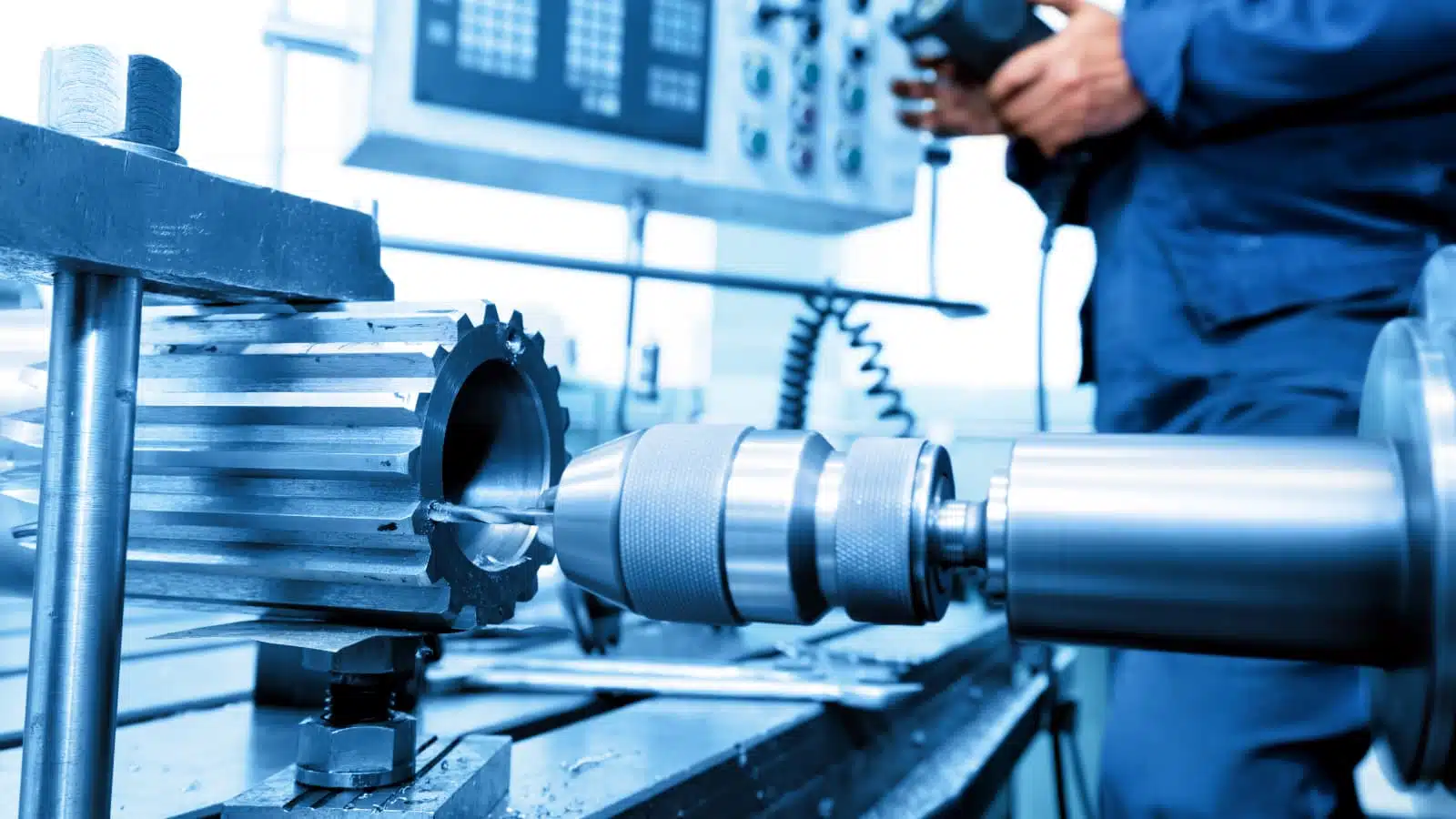
Running a CNC machine demands a specialist proficient in programmable codes and machine operations. Unlike traditional machining, which relies on manual labor, CNC machining relies on skilled individuals with technical expertise. This adds to the operational expenses per part. Nonetheless, CNC machines offer cost-saving benefits over time by offering a cost-effective CNC production operation.
Less Cost-effective for Very Small Batches
CNC machining might not be the most efficient choice for small-scale production primarily due to the high setup investment. These machines require significant upfront costs regarding equipment, tooling, and programming expertise. Additionally, each workpiece needs a specific CNC machining program created and optimized for it, adding to the time and cost involved in setting up the machining process. This setup time can be a major drawback for small-scale production runs where frequent changes or small batches are needed. Traditional manual machining methods might be more cost-effective and time-efficient in these cases.
What’s Conventional Machining?
Conventional machining involves shaping materials with manual tools and machines like mills, grinders, lathes, and drill presses. These devices enable operators to carve out small pieces from a workpiece to achieve the intended shape. The machinist selects the appropriate cutting tool based on the material and desired outcome. They then secure the workpiece in a vise or fixture on the machine tool (lathe, mill, drill press, etc).
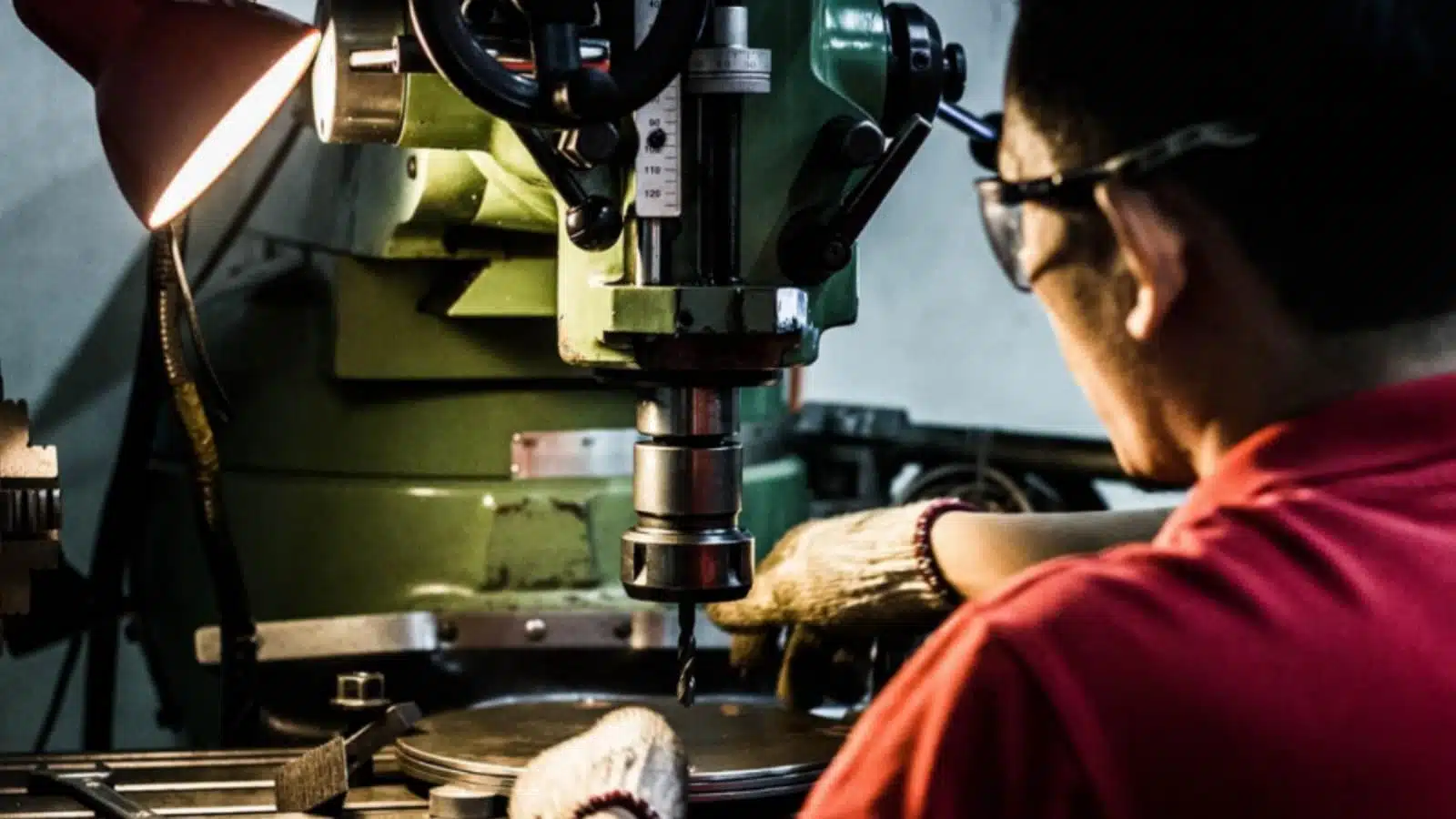
The machinist manually controls the machine, manipulating levers and handles to move the cutting tool against the workpiece. They rely on their experience to determine factors like cutting speed, feed rate, and depth of cut. As the cutting tool comes into contact with the workpiece, it removes material through shearing. The machinist continuously observes the process, adjusting to maintain proper cutting conditions and achieve the desired shape.
This machining method forms the backbone of current mechanical manufacturing. The procedure typically follows a sequence from initial machining to measurement and possible re-machining, heavily dependent on the operator’s experience.
Advantages of Conventional Machining
While it is a more manual method, conventional machining offers useful advantages in various scenarios.
Lower Initial Investment
Conventional machining tools are less expensive upfront compared to CNC machines. They offer a more affordable entry point for small workshops, startups, or anyone beginning their projects. This reduced initial cost facilitates a smoother start in manufacturing without heavy financial strain.
Flexibility for Small Batch Production and Prototypes
Conventional machining stands out for its adaptability in small-scale production and prototyping. Its machines can be easily adjusted or modified without complex reprogramming. As a result, it is perfect for crafting unique items or limited runs with regular design updates. This capability is especially valuable for prototyping or experimenting with new designs before large-scale manufacturing.
Easier to Change or Adjust in Mid-process
Operators using conventional machining can directly observe and adjust the process in real time. This enables immediate changes based on observations or unforeseen circumstances. Unlike CNC machines, which require modifications to the program, these adjustments can be made swiftly. Thus, conventional machining is a better choice for situations where adaptability and quick decision-making are crucial.
Suitable for Simple Parts and Operations
Conventional machining excels at creating parts with basic shapes and simple machining needs. The machinery performs fundamental operations such as turning, milling, and drilling efficiently. Therefore, they are ideal for projects that do not demand the intricate capabilities of CNC machining. This approach enables the effective production of simple parts without resorting to high-tech solutions that may not be necessary for the project.
Disadvantages of Conventional Machining
Despite its benefits, traditional machining has some drawbacks that make it less suitable in certain situations.
Lower Precision and Repeatability Compared to CNC
In contrast to CNC machining, traditional machining techniques provide less precision and consistency. The processes rely heavily on the operator’s skill and manual control over the tools and adjustments. Such manual involvement can result in differences in sizes, surface quality, and uniformity of the parts, particularly with intricate shapes.
Higher Potential for Human Error
As mentioned earlier, conventional machining relies significantly on the operator’s skill and judgment. This reliance on human control introduces the potential for errors from factors such as fatigue, misreadings, miscalculations, etc. These errors may result in inconsistencies and scrapped parts, ultimately increasing CNC machining costs.
Slower Production Rate and Efficiency
Manual machining methods typically operate slower than CNC due to manual interventions such as adjustments, tool changes, and operator-controlled processes. This reduced speed reduces efficiency, making these methods less optimal for high-volume production with consistent speed.
Furthermore, the time-intensive nature of these methods requires businesses to anticipate longer wait times for their finished products. This affects quick responses to customer demands or shifts in the market. Additionally, machining processes offer limited flexibility in design. Once a design is set, making modifications can be challenging and expensive. This rigidity restricts a business’s innovation capacity and ability to tailor products to evolving consumer preferences.
Requires Highly Skilled Operators
Effectively operating traditional machines demands considerable skill and experience. This includes a thorough knowledge of the machining technique, equipment capabilities, and material properties. This requirement creates challenges for businesses in sourcing qualified personnel, and training new employees can be costly and lengthy.
Differences Between CNC vs Conventional Machining
Now that we have examined each process individually, let’s check out the main differences between CNC machining vs conventional machining.
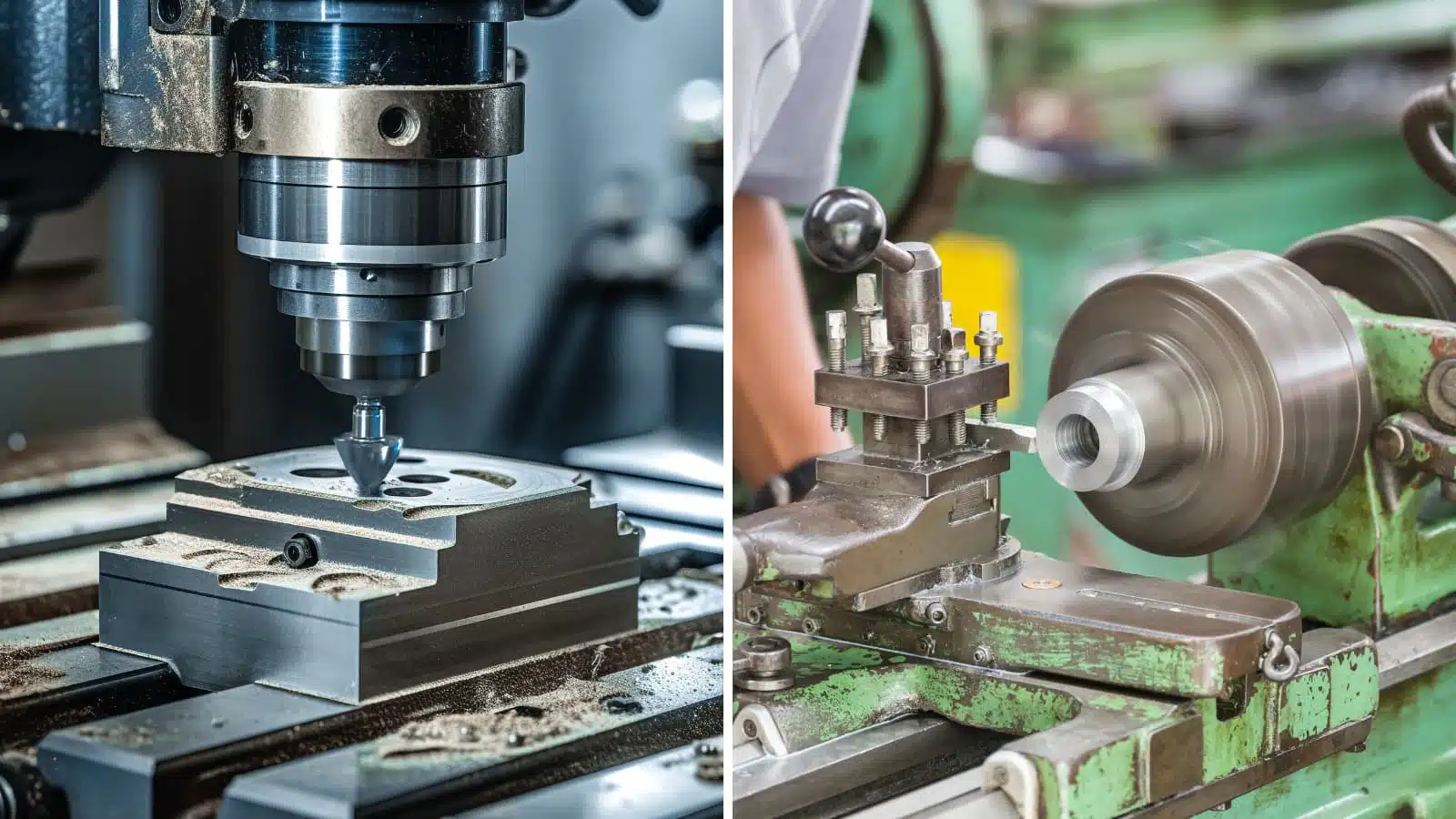
Precision and Complexity of Parts
The key difference between CNC and traditional machining lies in computerized control versus human control. CNC machining thrives on computer control, translating to significantly higher precision and consistent accuracy. Unlike traditional methods, where the operator manually guides the tools, CNC machines follow pre-programmed computer instructions to the finest detail. This eliminates the possibility of human error that can plague manual machining.
On the other hand, conventional machining relies on the skill and experience of the operator to achieve the desired outcome. This human element introduces limitations in terms of precision and complexity. While skilled machinists can achieve impressive results, they are susceptible to fatigue and slight inconsistencies, leading to variations in part dimensions and surface finishes. Additionally, producing complex parts becomes more challenging and time-consuming with traditional methods, often requiring specialized skills and multiple setups.
CNC precision machining allows for tighter tolerances, meaning the finished parts adhere to stricter dimensional specifications. This is crucial for aerospace, medical devices, and electronics industries, where slight variations can significantly impact functionality and safety. The computerized control allows for multi-axis movements and complex toolpaths. As a result, creating intricate geometries, intricate curves, and precise details is possible with unmatched consistency. This opens doors to creating innovative and highly functional CNC products in various industries.
Material Type
While CNC and conventional machining can handle a variety of materials, their capabilities differ significantly regarding material type. CNC machining offers greater material versatility. Unlike conventional methods, it isn’t limited by tool hardness due to its ability to utilize a wider range of tools and machining techniques. This includes employing advanced cutting tools from harder materials like diamond-coated tools or carbide inserts.
Additionally, CNC machining can leverage techniques like electrical discharge machining (EDM) or waterjet cutting, which are not constrained by material hardness. This versatility allows CNC machining to tackle a much broader spectrum of materials, including hard and brittle materials that would be challenging or impossible for conventional methods. This paves the way for machining materials like titanium, stainless steel, Inconel, ceramics, and even plastics with intricate features and high precision.
On the other hand, conventional machining is generally limited to softer materials. This technique relies on tool cutters made of materials with defined hardness levels. If the workpiece material is harder than the tool cutter, it can damage the cutter. As a result, it may lead to poor surface finish, tool wear, and potential safety hazards. Therefore, conventional machining is typically suitable for softer materials like aluminum 6061, lead, mild steel, tin, and brass. These materials fall within a hardness range that allows conventional tools to effectively remove material without compromising their integrity.
Production Volume and Efficiency
CNC machines excel in high-volume production. Their automated operations include pre-programmed CNC tool paths, automatic tool changes, and continuous operation. This significantly reduces production times compared to traditional methods. Manufacturers can use the same program to create multiple identical parts without manual intervention. This enhances the efficiency of batch production. Furthermore, unlike human operators who require breaks and rest periods, CNC machines can operate continuously. It maximizes resource utilization and boosts overall productivity.
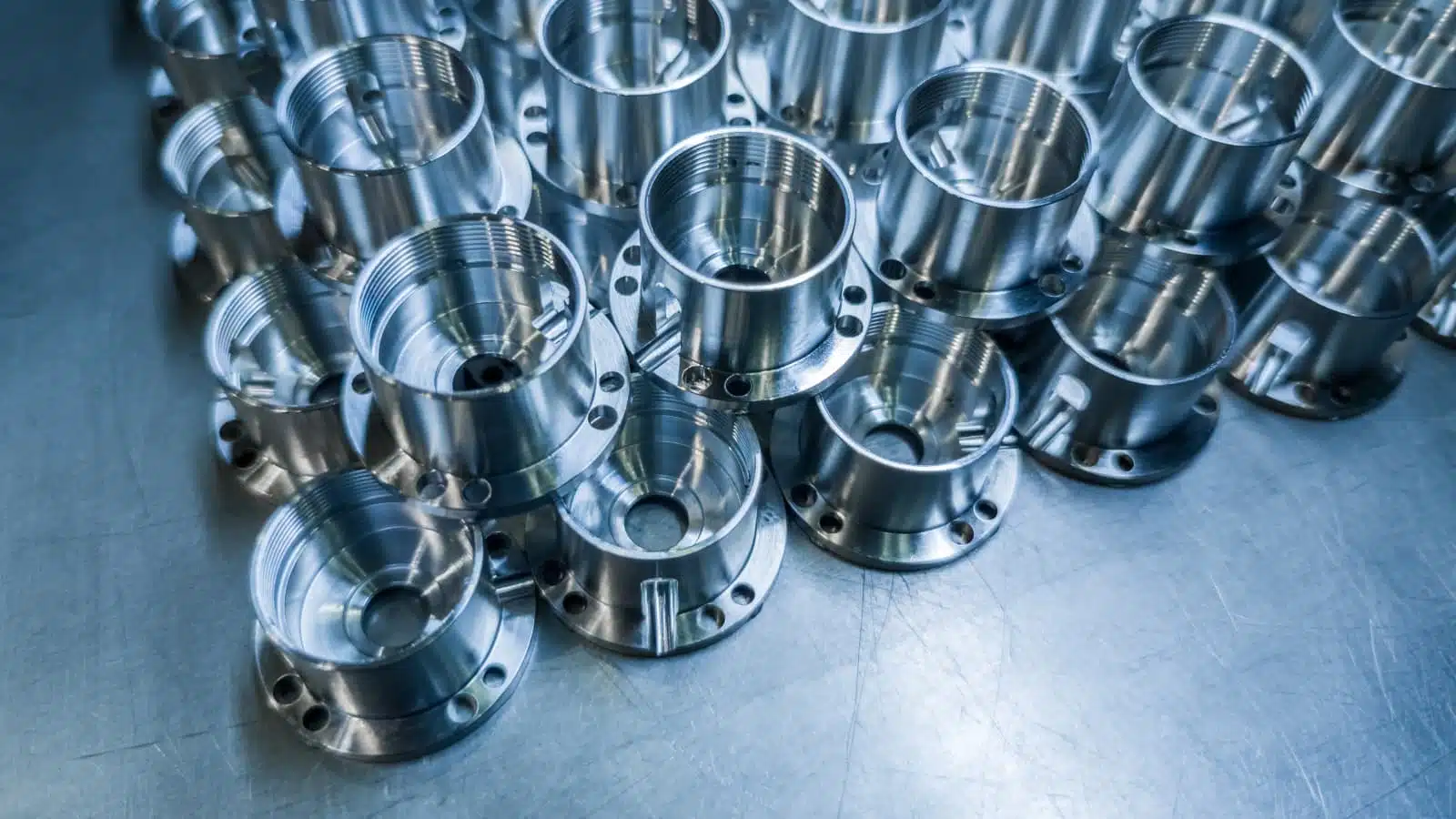
In contrast, traditional machining relies heavily on the skill and experience of the operator. Therefore, it is more suited to producing small batches of components. While streamlining processes can offer some efficiency gains, it cannot compete with the automation and consistency of CNC machining. Besides, the product quality in conventional methods is directly linked to the operator’s abilities. Therefore, there will be potential variations and inconsistencies, especially for complex parts.
Cost-Effectiveness
CNC machining carries a significant disadvantage in terms of initial setup costs. The machinery, programming, and tooling needs often require substantial investment. This can be a setback for small-scale production runs, where the initial investment might outweigh the immediate benefits. However, when considering larger production volumes, CNC machining offers significant long-term cost advantages. Its increased efficiency, reduced waste, and lower labor costs come into play.
While conventional machining has a lower initial investment, it can incur higher labor expenses for larger production runs. The time and effort required for manual operation and the potential for errors and rework can increase costs.
Skill Requirements for Operation
CNC machining offers a significant advantage in terms of operator experience dependence. Its computerized control ensures consistent and precise machining regardless of the operator’s experience level. This is because the pre-programmed instructions dictate the entire CNC process. It eliminates the possibility of human error and inconsistencies associated with manual operation. This allows even operators with less experience to produce high-quality and consistent parts.
Conversely, traditional machining heavily relies on the skill and experience of the operator to achieve desired results. While skilled operators can produce high-quality parts, their experience level directly impacts consistency, especially for complex geometries. This can lead to rework, scrap parts, and increased production time. Additionally, training skilled operators requires time and resources, which adds to the overall cost burden.
Here’s a table summarizing the differences between conventional machining vs CNC machining:
| Features | CNC Machining | Conventional Machining |
| Precision and Complexity of Parts | High-precision, consistent, complex parts possible | Lower-precision and simpler parts |
| Material Type | Wider range, including hard and brittle materials | Softer materials |
| Production Volume and Efficiency | High-volume production; automated, fast, and more efficient | Lower volume parts; manual, slower, less efficient |
| Cost-Effectiveness | High initial cost, lower long-term cost (large volume) | Lower initial cost, higher potential for long-term cost (large volume) |
| Skill Requirements for Operation | Less operator skill required; programming skill needed | High operator skills required |
Is CNC Machining Better than Conventional Machining?
The choice between CNC and manual machining depends largely on your specific needs and production objectives. Both technologies aim to convert raw materials like metal and plastic into final products. However, the key difference lies in the automation provided by CNC machining as opposed to the manual techniques of conventional machining.
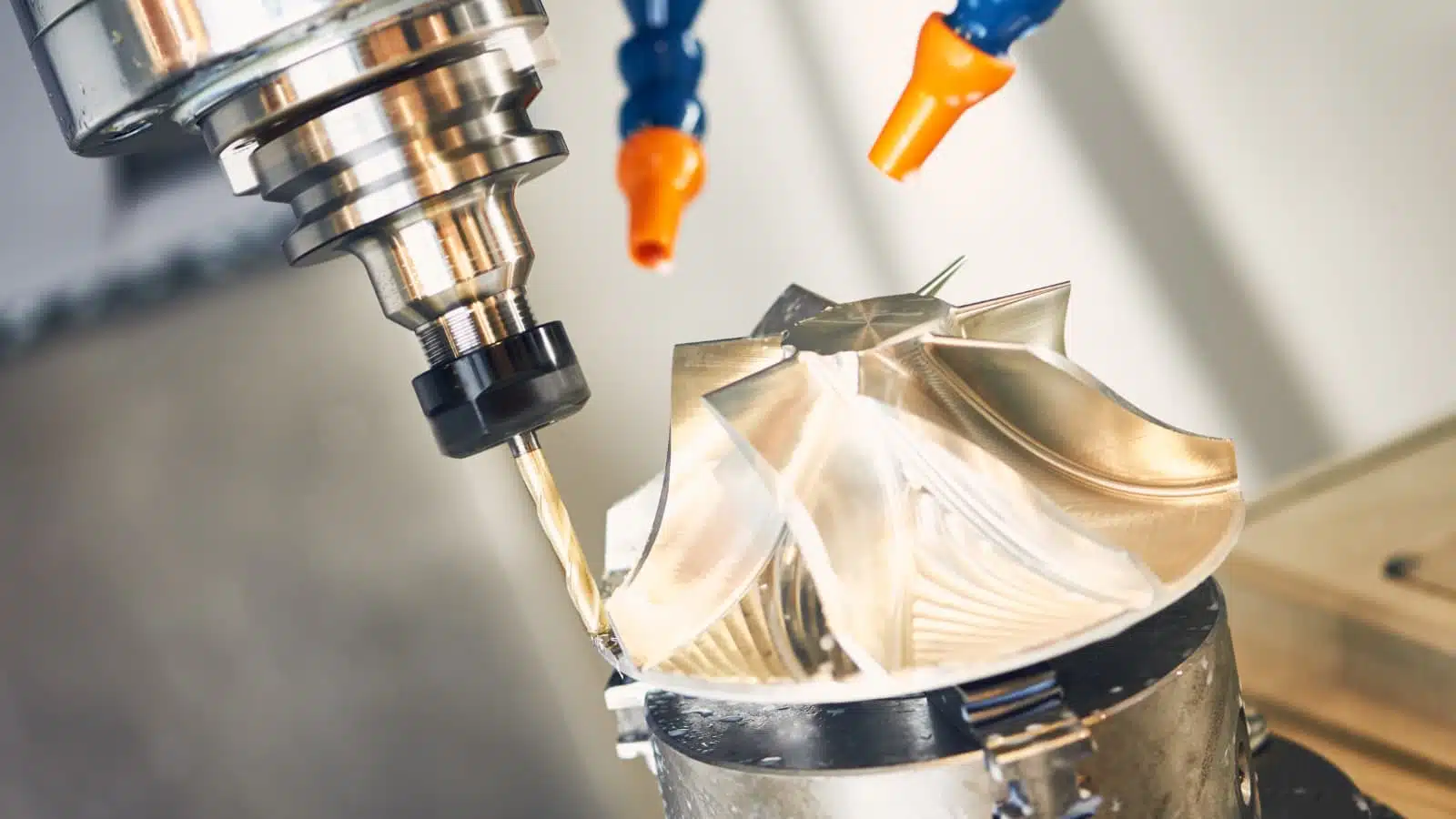
CNC technology surpasses traditional methods in terms of production efficiency, speed, and accuracy. Manual machining may be more appropriate for unique, custom projects where only a single item is needed. But for larger production runs or when precision is crucial, CNC machining is the preferred option.
Conclusion
Deciding on the machining technology for a project can be a hassle, but this CNC machining vs conventional machining article has helped you move a step further. By now, you should know which of the techniques are suitable for your project. While traditional machining offers lesser upfront costs, it is not well-suited to high-volume production. In that case, CNC machining technology is your best bet. However, you might have to incur higher initial costs.
If the upfront cost of CNC equipment is a barrier, considering RapidDirect’s CNC machining services could be an effective workaround. RapidDirect offers extensive machining options, including multi-axis, 3-axis CNC machines, CNC milling, CNC lathes, and many more. As a result, we offer high-quality, precise components without the major investment in equipment. Our expert engineers are extensively skilled and experienced in CNC machining. Thus, you can be sure that your project is in safe hands.
Once you upload your design file and request a quote on our quotation platform, you will receive an instant quote with expert DfM analysis to improve your manufacturing experience. Contact us today if you have any inquiries about our services.


